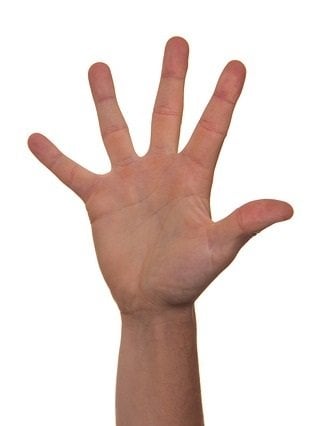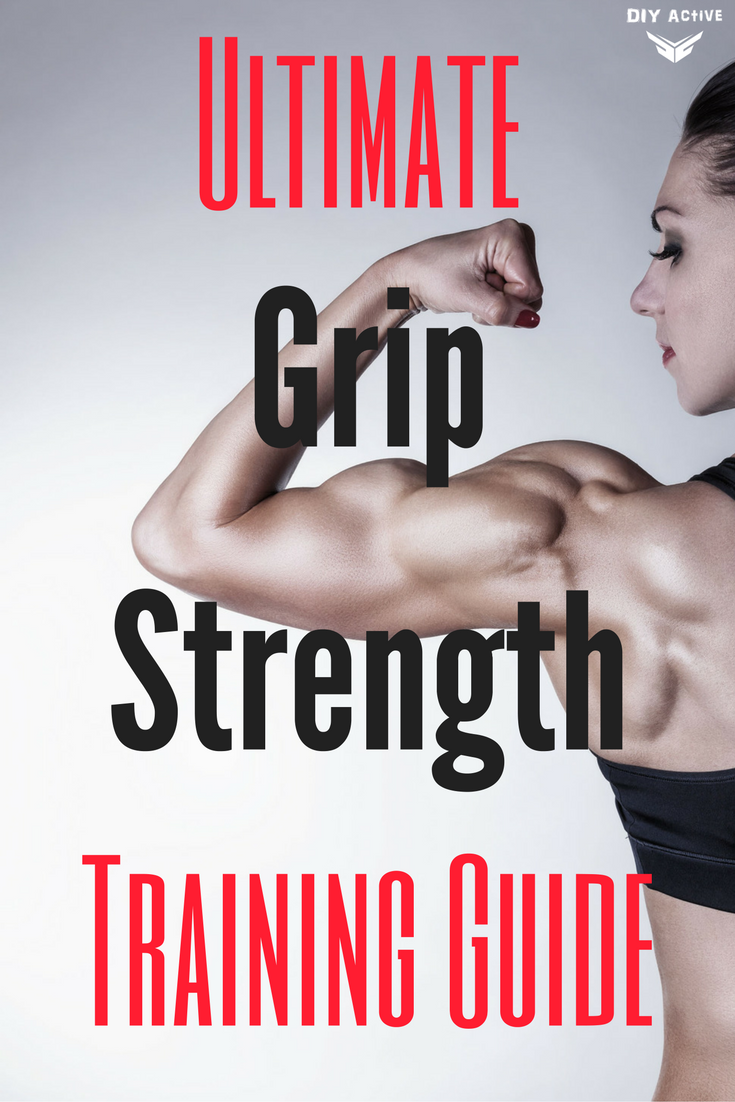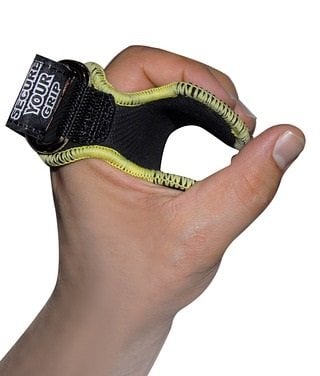
Need to Improve Your Grip Strength?
Dropping dumbbells? Want to improve your grip? Time to get a grip on it (pun intended) and work towards your overall health, one grip strength exercise at a time!
Improve your grip strength
Deadlift bar dropping out of your hands before your back quits? Wrists rolling back on bench and holding you back?
The answer is, strengthening your grip, hands, fingers, and forearm muscles. This group of muscles controls how tightly you can grip the bar, how much weight you can hold, and how long you can last before dropping it.
This affects the control of your stick or racket in sport, and how well you stick to an opposing player when completing a tackle for example.
I see a lot of people resorting to wraps and lifting straps (like straps or chalk) and while they’re useful to not let your grip hold you back, you’re not solving the root problem. You’re essentially using them as a crutch.
You’ll be the most effective lifter and athlete when your grip is strong, and for lifters when it’s on par with the major muscle groups so you can hold onto your maxes.
Once that’s achieved you can use those previously listed lifting aids to push yourself even further in strength and muscle development. Use them to extend your strength and combat fatigue – not as a crutch.
So how do you do that? Let’s get into it.
 You may have heard this before, but I honestly believe that grip training is one of the most underrated areas of training out there. The grip is essential for these barbell movements I’ve been talking about, and also for a whack of sports where you’re holding onto a stick or racket, or maybe battling for position with your hands.
You may have heard this before, but I honestly believe that grip training is one of the most underrated areas of training out there. The grip is essential for these barbell movements I’ve been talking about, and also for a whack of sports where you’re holding onto a stick or racket, or maybe battling for position with your hands.
Here are some examples of sports, disciplines, and general areas of life where grip and hand strength alongside grip control is essential:
- All types of lifting
- Gymnastics
- Golf, tennis, racquet sports, hockey
- Wrestling, MMA, grappling, JiuJitsu
- Shot put and other field sports, pole vault
- Strongman
- AND working on the computer all day at a desk job
Depending on your discipline, and what you want to work on, there are a few different types of grip strength you can train. The main types are as follows: (Note – there are a ton of different names for these, this is how I refer to them.)
- Crush grip – A “crushing” movement as described when you’re gripping something in between your fingers and palm. Ex – squeezing a barbell uses a crush grip.
- Pinch grip – Similar to the crushing grip except in between the fingers instead. Imagine holding a plate between your fingers and squeezing.
- Supported crush grip, or hanging grip – Using the crushing grip but supporting a load rather than squeezing it, for example, a farmer’s carry or carrying your grocery bags into the house. Hanging on a pull-up bar is another example.
- Hanging pinch grip/monkey grip – Similar to the support crush grip, but without the use of the thumbs crushing. This will work on the fingers only and is often called the monkey group, not using the thumb or wrapping the thumb on the outside with the rest of the fingers. EX: thumbless hang on a pull-up bar.
After going over these types of grips, you can see how the crushing grip could be beneficial for overhead pressing and squeezing the bar tight while you drive up.
The supported crush grip is perfect for deadlifts, rows, pull-ups, and hangs as you’re working on keeping your hands squeezing tight around the bar while also not letting go and giving in to fatigue.
The immediate effects of training the pinch grip may not be seen, but each of the individual fingers plays a role when gripping a larger object so working your pinch grip can also power the development of your crush grips.
Now that we’ve got some info on grip types, how are we going to train these mitts of ours? Here are my recommended exercises and how to work them into your existing program.
Some are more transferable to your main lifts than others, but switching it up is always a great idea so take your favorites out of these, and then try the other ones too!
Training Your Grip
To be honest, thinking of how to work in grip training to your existing workout program can be a bit tricky.
You don’t want it to affect your main lifts or diminish your effectiveness if you’re playing a sport, but it’s an important aspect of training and development that’s often overlooked.
One way I’ve personally found effective for grip training is to 1. Train it during deload periods or off days, and 2. Train it AFTER maxing or a grueling workout where I’m normally taking a few days off afterward. Other than that, if your training permits you can work it in 1-3 times per week as necessary.
I was always worried about grip training getting in the way of other progressions but in the long run, it’s way more beneficial than you think for stability, control, and pulling heavy weights.
7 Great Grip Strength Exercises
Hand Grippers
 These are great for grip training, my favorite aspect is that you don’t even need to be at the gym to use them so you can train with them throughout the day.
These are great for grip training, my favorite aspect is that you don’t even need to be at the gym to use them so you can train with them throughout the day.
Hand grippers are available in a wide variety of resistances and you can do a few different exercises with them.
For example, you could perform several repetitions with grippers, lower amounts of reps with a higher resistance, or even squeeze the gripper in and hold there for a set amount of seconds.
This is pure crush grip training and the convenience is unparalleled by any other method on this list.
You can get hand grippers in single resistances up to around 350lbs, adjustable resistance models, and in a few other funky variations. I prefer the single resistance grippers as they go up to the highest weight.
Here’s a guide on how to pick grip strengtheners you can check it out if you need a pair.
Barbell Holds
A simple and ultra-effective grip exercise that transfers directly to the row and deadlift, should be a staple in everyone’s grip workout. You can set this up in a squat rack or out in the open.
Increase the weight, and time held together and vary the duration/weight to work your supporting crush grip differently.
Variations could include gripping the bar closer or wider apart, and using a thinner or thicker bar – or including the use of fat gripz which we’ll talk about a bit next.
 Fat Gripz
Fat Gripz
Training with Fat Gripz does require some additional investment but I think they pay for themselves pretty quickly.
Basically, these rubber grip molds fit around any standard barbell or dumbbell to give you a wider cylinder to grip onto.
This turns any barbell/dumbbell exercise into a grip strength exercise which is super convenient if you’re having a hard time including grip training into your routine.
If all you did was add Fat Gripz onto a few of your exercises every other day you were in the gym I think you would see noticeable forearm gains and improved crush grip and supported crush grip for your deadlifts.
Farmer’s Carries
Farmer’s carries are essentially a moving barbell hold where you’re traveling a set distance while holding a heavy object including but not limited to a duffle bag filled with weight, a barbell, dumbbells, or plates.
The variations come with how long you’ll walk for (basically how long you’ll hold the weight for), how heavy the weight is, what shape the handle/grip you’ll be holding onto is.
You can work for one or both hands at the same time, most people work both. The extra movement and strength required to hang onto the weight are great for developing your back and traps as well.
Nothing like training some grip and cardio at the same time!
Plate Pinches
Pretty simple exercise here to work on the pinch grip – take a plate at the gym and hold it between your fingers for as long as you can. Mix up the weight, duration, and your finger grip on the plate.
Dumbbell Holds
This is a variation of the plate pinches where you’re using a more open pinch grip to hold a dumbbell vertically with your fingers wrapped around the wide part. Alter weight, dumbbell size if possible, length of hold, and you’re good to go.
Pull-Up Bar Hangs
 Last but not least, probably the most encompassing way of training the supported grip is the hang. Test your fingers, test your grip, test your endurance, and all of the supporting muscles.
Last but not least, probably the most encompassing way of training the supported grip is the hang. Test your fingers, test your grip, test your endurance, and all of the supporting muscles.
Here are some variations:
- Grip width – Varying your grip width will work your arms, back, and hands/fingers differently due to the different grip positions. Try close together, shoulder width, and wide grips.
- Underhand or overhand – Mixing it up engages the forearms and wrist differently.
- Thumbed or thumbless – Here we can pick between a crush or pinch grip development.
- Weighted – Add weight to increase the resistance, but it will in turn reduce your duration. Mix it up to work endurance and also muscle development
- Bar thickness – If you have the option to vary this – it can be effective to work your hand muscles differently as they grip around a thicker or narrower bar.
If I were to include only one or two grip building exercises it would probably include barbell holds and hangs – there are just so many variations between the two that are transferable to the main lifts.
Not only talking about powerlifters, crossfitters, or Olympic lifters, improving your grip as a sports athlete can improve your lifts and therefore your athletic performance and benefit from cross-training alongside the normal benefits of grip training.
Win-win! Hangs and barbell hold also require minimal equipment.
Wrap-Up
I think after reading this you should feel confident in approaching grip strength.
Grip training should be included in every regime – work it in slowly and ramp up to reap the benefits.
I don’t think you should completely neglect chalk or straps because they do allow you to continue developing those larger muscle groups past fatigue – but eventually, you want to work towards using these lifting aids to push your lifts further rather than simply catching your grip strength up to the rest of your muscles.
Here are some additional resources:
- Lifting straps guide – if you do use them, get a decent pair
- Video by Elliott Hulse on training grip strength
- Post-Workout Meal: Getting the Most from Your Workout - January 22, 2024
- 6 Ab Exercises To Blast Your Core - December 17, 2023
- 10 Office Exercises You Can Do To Burn Calories - November 19, 2023

 Fat Gripz
Fat Gripz

